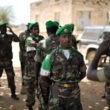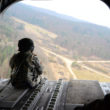By next year, a residual force of 9,800 u.s. troops will remain in Afghanistan, down from 33,000 this year and 100,000 in 2011, according to drawdown plans announced by President Barack Obama.
At the time the president announced that policy in late May, the cost of the two big foreign policy initiatives of the George W. Bush administration—wars in Iraq and Afghanistan—was $3.1 trillion and counting.
“Counting” will continue after all U.S. troops leave Afghanistan by 2016 (assuming troop departure follows the schedule laid out by the president).
War costs are dynamic, not static, even after wars end. To get to the $3.1 trillion estimate, frequently ignored cost drivers are included in an ongoing tabulation by Costofwar.org—a collective of policy analysts, economists and academic experts evaluating expenditures in Iraq, Afghanistan and the extension of the war into Pakistan.
Based on Congressional Research Service numbers, Costofwar reports: “By Fiscal Year 2013, the Pentagon total for Afghanistan, Pakistan, and Iraq was almost $1.4 trillion.”
Debt-service adds dramatically to that figure. Previous wars have been paid for by selling war bonds or raising taxes. Wars in Iraq and Afghanistan are paid for with borrowed money. Interest paid to date is $239 billion. According to Costofwar’s reporting: “Even if all the war-related spending ceased today, interest costs alone are projected to add more than $1 trillion to the national debt by 2023.”
Added debt-service runs the tab up past $2 trillion.
“Counting” will continue after all U.S. troops leave Afghanistan by 2016.
Other expenditures and projected costs are often missing from reporting that focuses almost exclusively on Department of Defense spending on the war itself. One example is $135 billion already spent for medical care and disability payments for more than a million veterans of both wars. Obligations to disabled veterans will peak in 30 to 40 years, and are estimated at $754 billion.
Costofwar also provides metrics on the human costs of the wars.
More than 6,500 U.S. troops have died.
More than 106,000 U.S. troops have been wounded by enemy attacks or were otherwise injured or made sick while in war zones.
At least 136,000 Iraqi civilians have died by direct violence specifically related to the war.
Costofwar’s estimates are among the lowest. In October 2013, a group of professors led by a University of Washington global-health authority, and a member of Iraq’s Ministry of Health, published the results of an extensive survey in the peer-reviewed PLOS Medicine. They estimated 405,000 civilian deaths: 240,000 caused by violence and the others a result of war-related causes.
In Afghanistan, 18,000 to 20,000 civilians have been killed as a direct consequence of the war.
The Veterans Administration has approved 671,000 disability claims, as of August 2012.
According to VA data, from 2000-2012 approximately 247,000 Iraq and Afghanistan veterans were diagnosed at VA facilities with post-traumatic stress disorder.
At least 3,000 and probably many more civilian contractors have been killed in Iraq and Afghanistan. The number is probably higher, because the majority of contractors in Iraq are citizens of other countries, many of whom appear not to have had their deaths or injuries reported.
A large contingent of contractors will remain in Iraq and Afghanistan after U.S. troops depart, so contractor casualties will likely continue.
Lou Dubose is the editor of The Washington Spectator.







0 Comments